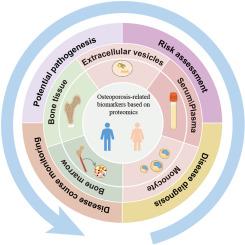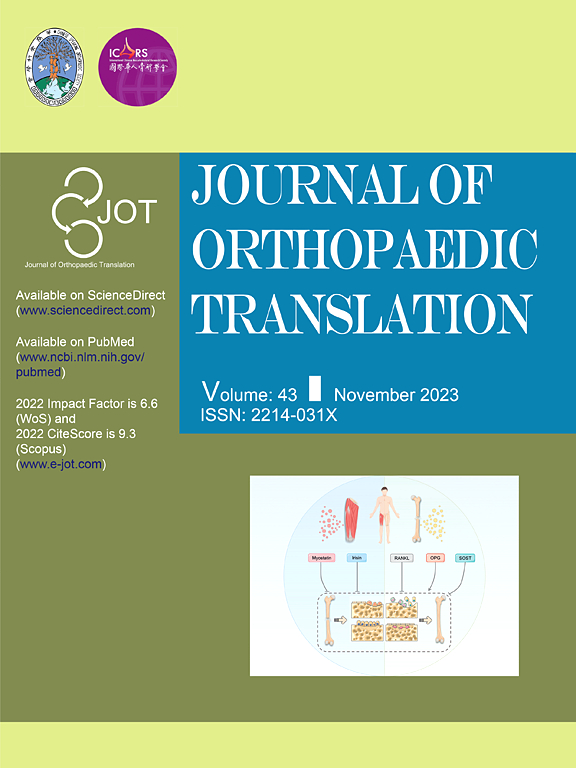An updated overview of the search for biomarkers of osteoporosis based on human proteomics
IF 5.9
1区 医学
Q1 ORTHOPEDICS
引用次数: 0
Abstract
Osteoporosis is a chronic metabolic disease that increases bone fragility and, leads to severe osteoporotic fractures. In recent years, the use of high-throughput omics to explore physiological and pathological biomarkers related to bone metabolism has gained popularity. In this review, we first briefly review the technical approaches of proteomics. Additionally, we summarize the relevant literature in the last decade to provide a comprehensive overview of advances in human proteomics related to osteoporosis. We describe the specific roles of various proteins related to human bone metabolism, highlighting their potential as biomarkers for risk assessment, early diagnosis and disease course monitoring in osteoporosis. Finally, we outline the main challenges currently faced by human proteomics in the field of osteoporosis and offer suggestions to address these challenges, to inspire the search for novel osteoporosis biomarkers and a foundation for their clinical translation. In conclusion, proteomics is a powerful tool for discovering osteoporosis-related biomarkers, which can not only provide risk assessment, early diagnosis and disease course monitoring, but also reveal the underlying mechanisms of disease and provide key information for personalized treatment.
The translational potential of this article
This review provides an insightful summary of recent human-based studies on osteoporosis-associated proteomics, which can aid the search for novel osteoporosis biomarkers based on human proteomics and the clinical translation of research results.

基于人类蛋白质组学寻找骨质疏松症生物标志物的最新概述
骨质疏松症是一种慢性代谢性疾病,会增加骨的脆性并导致严重的骨质疏松性骨折。近年来,利用高通量 omics 技术探索与骨代谢相关的生理和病理生物标志物的研究越来越受欢迎。在这篇综述中,我们首先简要回顾了蛋白质组学的技术方法。此外,我们还总结了近十年来的相关文献,全面概述了与骨质疏松症有关的人类蛋白质组学的进展。我们描述了与人体骨代谢相关的各种蛋白质的具体作用,强调了它们作为生物标记物在骨质疏松症风险评估、早期诊断和病程监测方面的潜力。最后,我们概述了人类蛋白质组学目前在骨质疏松症领域面临的主要挑战,并提出了应对这些挑战的建议,以激励人们寻找新型骨质疏松症生物标志物,并为其临床转化奠定基础。总之,蛋白质组学是发现骨质疏松症相关生物标志物的有力工具,它不仅能提供风险评估、早期诊断和病程监测,还能揭示疾病的潜在机制,为个性化治疗提供关键信息。本文的转化潜力这篇综述对近期基于人体的骨质疏松症相关蛋白质组学研究进行了深入总结,有助于基于人体蛋白质组学寻找新型骨质疏松症生物标志物,并将研究成果进行临床转化。
本文章由计算机程序翻译,如有差异,请以英文原文为准。
求助全文
约1分钟内获得全文
求助全文
来源期刊

Journal of Orthopaedic Translation
Medicine-Orthopedics and Sports Medicine
CiteScore
11.80
自引率
13.60%
发文量
91
审稿时长
29 days
期刊介绍:
The Journal of Orthopaedic Translation (JOT) is the official peer-reviewed, open access journal of the Chinese Speaking Orthopaedic Society (CSOS) and the International Chinese Musculoskeletal Research Society (ICMRS). It is published quarterly, in January, April, July and October, by Elsevier.
 求助内容:
求助内容: 应助结果提醒方式:
应助结果提醒方式:


